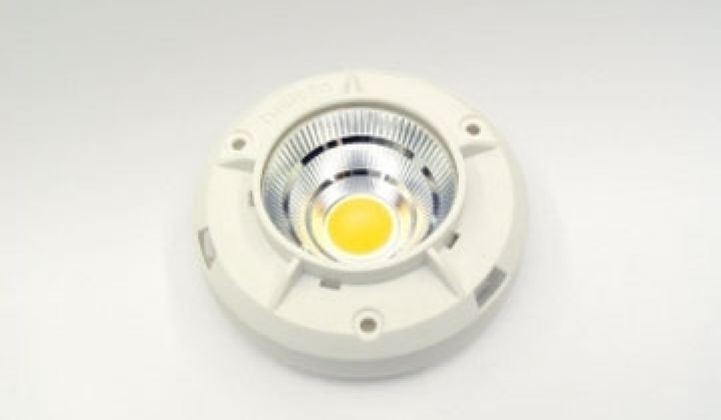LED lights are coming.
The next stage in their transition to the mass market will be figuring out which ones work well. Although LEDs consume nearly one-tenth the power of incandescent bulbs and half the power of compact fluorescents, they often have other issues. Some white light LEDs give off a greenish tone. The light from the chip is actually blue; the green tone appears because the yellow phosphor is not perfectly matched.
Other LEDs can give off excessive amounts of heat from the back of the light fixture. If the LEDs are spaced too far apart from one another in an array, shadowing can occur in the beam. In some cases, the light emitted might not be as powerful as some consumers would prefer; a bulb we tested from Lemnis Lighting worked great, but it was a tad on the dim side. We tested an LED array that gives off a square beam from Illumitex recently, too. Great performance, although a little green fringing occurred and we were only able to evaluate the design in a flashlight form -- Illumitex didn't have a bulb handy.
Bridgelux has fired an early salvo in what will likely be an escalating war of tests, claims and counterclaims -- and for good reason. The Helieon light fixture the company developed with Molex has just been released. Philips, Osram, General Electric and others won't come out with their incandescent bulb replacement LED bulbs for a while, so initially, the Helieon won't directly compete with these other bulbs.
The bulb comes in a specialized housing that requires a different kind of socket. It will get sold to commercial builders and contractors before it heads to the residential market. In contrast, the screw-in bulbs coming from Philips and others can go straight to homes. But over time, direct competition will begin to take shape. (Bridgelux makes the LED chips and electronics that drive them, but does not make the fixture or reflectors used in it. Other companies, such as Illumitex and GE, buy their LEDs from third parties and put their intellectual property into fixture development.)
The company sent us a Helieon to test. Here are some early thoughts:
--The quality of light is fairly good. It looks like the light that would come out of a standard light bulb. We didn't see green fringing or beam shadows under a variety of test conditions. (The videos were taken early in the morning.)
--The process of swapping the fixture in and out went smoothly. Unlike a regular bulb, the Helieon does not screw into a socket. Instead, it locks into a special socket, sort of like a smoke alarm. Thus, it can only be used in office buildings that have been retrofitted for its use. It's a great idea, but Bridgelux will have to convince fixture makers and engineers to play along in order for it to go mainstream.
--It's somewhat cheap, or at least it's getting there. The 800-lumen model, which puts out about as much light as a 60-watt bulb, will cost $19.99 in quantities of 20,000 or more. (The Philips LED socket bulb will emit 806 lumens.) Because those are volume prices, building owners will actually pay more for their Helieons. The company and its investors, however, have said that LEDs will be competitive economically with regular bulbs within 18 months to two years. LEDs might even be free, speculates Alan Salzman, who invested in Bridgelux: utilities will pay consumers to install them as a means of curbing power demand. Thus, expect the price to go down.
--The power and variety of fixtures from Bridgelux and its partners will increase, as well. The company can put more LEDs under the phosphor-coated lens to increase the quantity of light. A 1,200-lumen model of the Helieon already exists. It costs $24.99 in volume quantities.
--Bridgelux claims the drivers (the electronics behind the bulb) will be more efficient than those in competing fixtures. We can't test this, but expect to hear more.
--Strangely, Helieon's bulbs only come with a three-year warranty. One of the selling points of LEDs is that they can last for decades or longer.



